Following a decade-long period of decline, eelgrass acreage in Morro Bay turned a corner and has been expanding since 2017. The recovery began slowly with a few dozen acres mapped in 2019, but the rate of expansion has sped up significantly in the past several years. The most recent survey conducted in spring 2023 mapped 750 acres of eelgrass, the highest number ever recorded, which naturally leads to two questions: How did we get here? And what can we expect in the coming years?
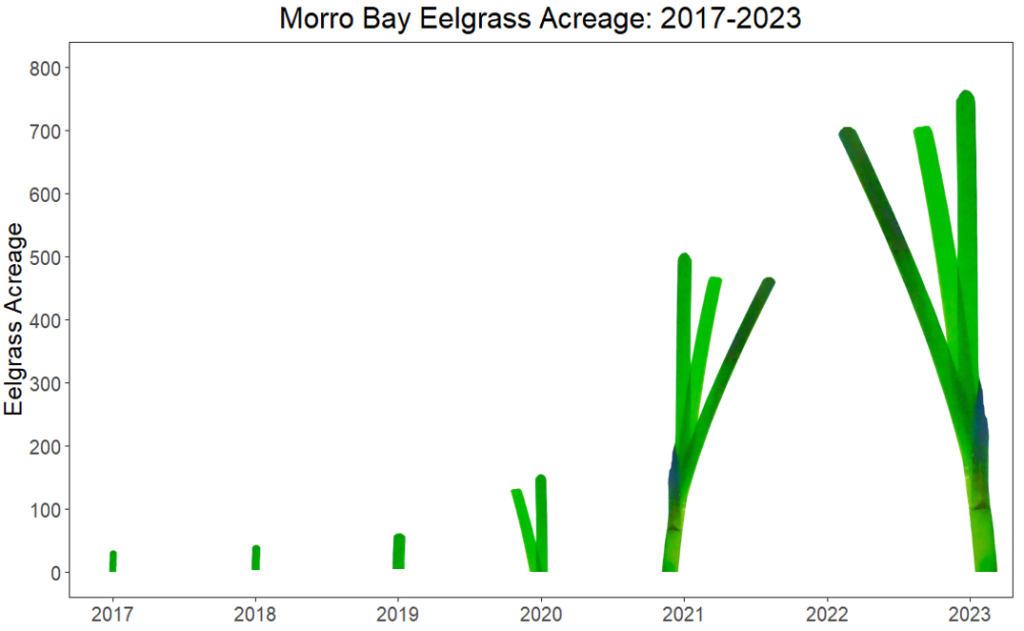
A Dynamic Estuary
While it can be tempting to search for a single factor driving eelgrass recovery, this may not be realistic for dynamic and complex estuarine systems like Morro Bay. Multiple factors come into play, and each one follows its own cycle and trajectory which impact eelgrass in different ways. It is much more likely that Morro Bay’s eelgrass beds are impacted by multiple effects that promoted growth and expansion. While we can’t pinpoint every factor, we have identified several that are probable contributors to the current trend.
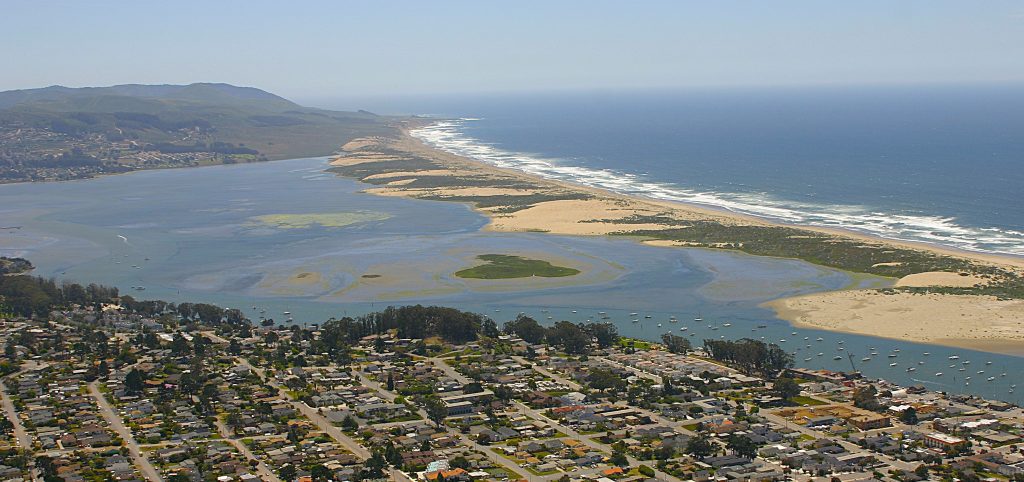
Climate Fluctuations
Broad factors like climate can have an impact on our local eelgrass. With this in mind, let’s consider the Pacific Ocean as our first potential driver of eelgrass expansion. The Pacific Ocean exhibits well-documented cyclical fluctuations in sea surface temperature called the Pacific Decadal Oscillation (PDO). The PDO has warm phases and cool phases, each lasting multiple years at a time. We are currently in the midst of a cool phase characterized by colder-than-normal water temperature, a condition that is favorable to eelgrass. While cold water may help set the stage for recovery, it is not the only driver, as we have also experienced acreage declines during previous cool phases.
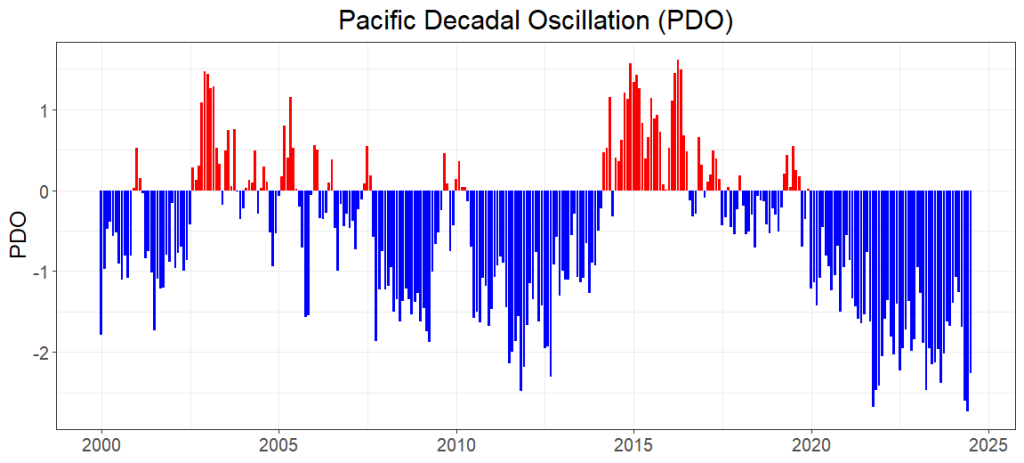
Erosion
Next let’s consider conditions in Morro Bay, where movement of sediment has resulted in notable changes in elevation across the estuary. Eelgrass and elevation are tightly interconnected as eelgrass prefers to grow in the intertidal and shallow subtidal regions. In turn, eelgrass impacts elevation by preventing erosion and stabilizing the sediment.
As eelgrass disappeared from the bay, the exposed mudflats that were left behind were eroded by waves and tides, resulting in decreased elevations and deeper waters across much of the estuary. This erosion increased suspended sediment and turbidity in the water, blocking the sunlight that eelgrass plants need to grow and negatively impacting eelgrass in the short term. However, in the long term this process of erosion likely carved out more acreage at a suitable depth range to support eelgrass. This is a prime example of the complexities of a habitat like eelgrass in a dynamic estuary and further highlights how multiple factors are at play in the recent recovery.
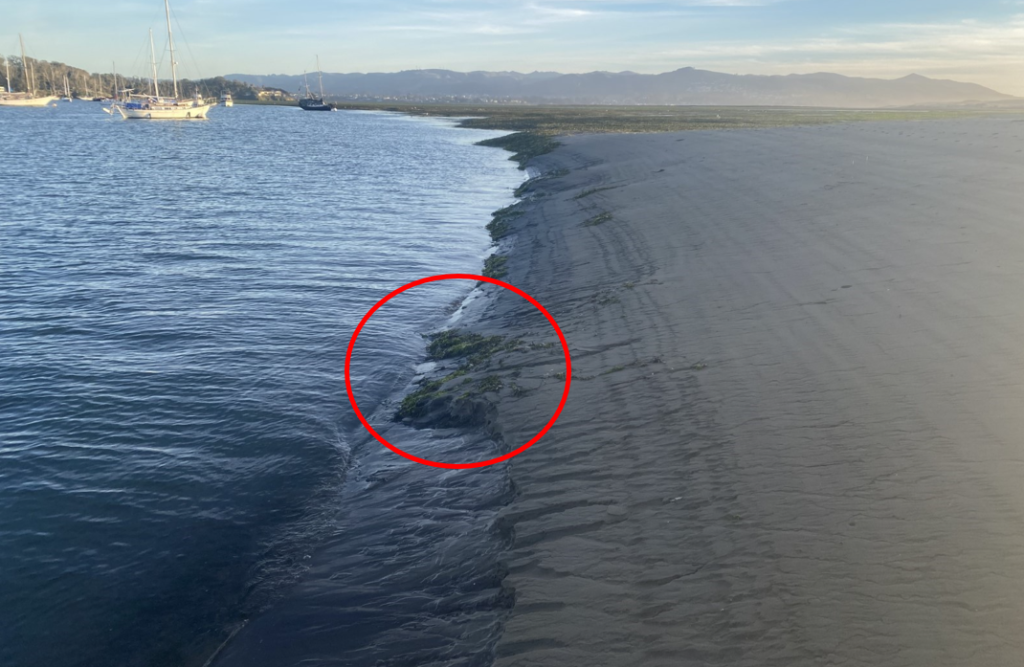
Restoration Efforts
Last but most certainly not least is the targeted restoration effort where we transplanted eelgrass from healthy donor beds within the bay to regions that had experienced die-offs. During restoration efforts from 2017 to 2022, over 15,000 eelgrass plants were transplanted at 39 restoration sites in the mid and back bay. This transplant method has also proved effective in other estuaries such as Elkhorn Slough. While we do not fully attribute the recovery to transplanting, this effort reintroduced eelgrass to areas where it had been lost, aiding expansion through root growth and seed dispersal.
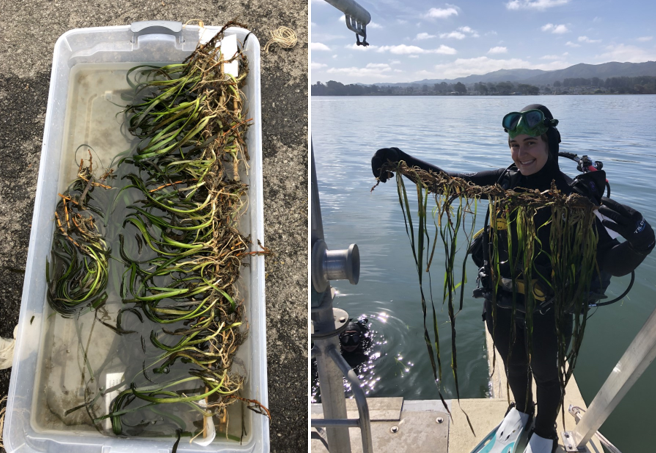
Is Morro Bay Maxed Out?
So what’s next for Morro Bay’s eelgrass? While we can’t know for sure, it appears that eelgrass is nearing its carrying capacity in Morro Bay. The spring 2023 surveys revealed that eelgrass covered over 70% of the estuary floor that is at a depth between +0.5 and –0.5 feet MLLW. Eelgrass was also growing at higher elevations than typical, up to +3.5 feet MLLW. Both of these factors indicate that eelgrass is reaching its maximum spatial extent in the bay, with decreases in acreage expected in the future.
One of the biggest unknowns is the rate at which acreage will change. Will we see a gradual decline to a healthy but more sustainable acreage or another precipitous drop to levels like we saw in 2017? Given the contributing factors ranging from global to highly local, it’s impossible to predict. Our approach is to stay informed through ongoing monitoring so we can respond quickly to indications of an impending decline. Morro Bay’s eelgrass is in a much better place than it was seven years ago, and our program is focused on monitoring and restoration to help ensure that it stays healthy and continues to provide our estuary and its inhabitants with valuable ecosystem services.
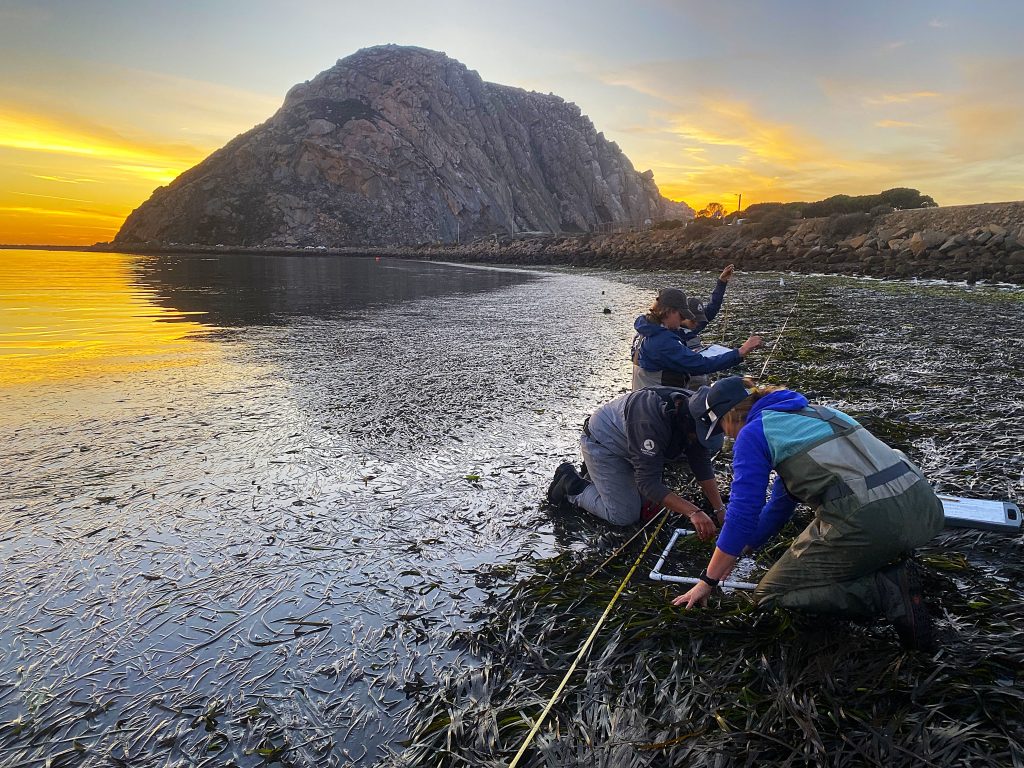
References
NOAA National Centers for Environmental Information. “Pacific Decadal Oscillation (PDO)”. Accessed August 29, 2024. https://www.ncei.noaa.gov/access/monitoring/pdo/
Hoekendorf, Robert. 2021. Remote sensing illustrates patterns of change and permanence in eelgrass meadows, False Bay Washington. https://digital.lib.washington.edu/server/api/core/bitstreams/7de26a3f-5168-46bc-adb1-ea3bc210d51e/content
Walter R. K., O’Leary J. K., Vitousek S., Taherkhani M., Geraghty C., Kitajima A. 2020. Large-scale erosion driven by intertidal eelgrass loss in an estuarine environment. Estuarine, Coastal, and Shelf Science 243. https://doi.org/10.1016/j.ecss.2020.106910
Beheshti K. M., Williams S. L., Boyer, K. E., Endris C., Clemons A., Grimes T., Wasson K., Hughes B. B. 2021. Rapid enhancement of multiple ecosystem services following the restoration of a coastal foundation species. Ecological Applications 32. https://doi.org/10.1002/eap.2466
Britannica. “Carrying capacity”. Accessed August 29, 2024. https://www.britannica.com/science/carrying-capacity
Help us protect and restore the Morro Bay estuary!
- Donate to the Estuary Program today and support our work in the field, the lab, and beyond.
The Estuary Program is a 501(c)3 nonprofit. We depend on funding from grants and generous donors to continue our work. - Support us by purchasing estuary-themed gear from ESTERO. This locally owned and operated company donates 20% of proceeds from its Estuary clothing line and 100% of Estuary decal proceeds to the Estuary Program. Thank you, ESTERO!
- Purchase items from the Estuary Program’s store on Zazzle. Zazzle prints and ships your items, and the Estuary Program receives 10% of the proceeds.
- Subscribe to our seasonal newsletter: Between the Tides!
- We want to hear from you! Please take a few minutes to fill out this short survey about what type of events you’d like to see from the Estuary Program. We appreciate your input!